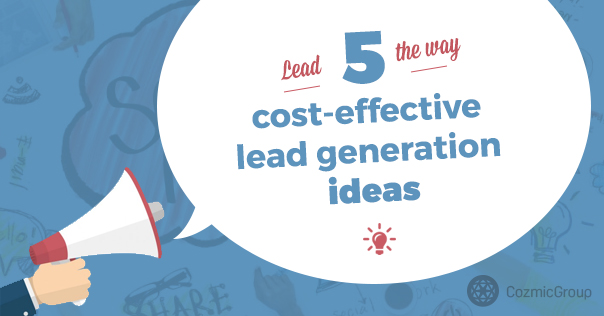Brands today are fighting a new kind of battle. To be precise, the battle itself isn’t entirely new: what has radically changed is the arena where the battle takes place. The constant expansion and evolution of the internet’s many ecosystems (each one with their own boundaries, trends, do’s and don’ts) are nothing but a challenging panorama for modern-day brands. We’re in the middle of an increasingly bigger scenario – rich, diverse and seemingly infinite, but also more complex than anything we’ve seen before.
Like every battle ever fought on an arena, there’s a prize to be won here. For brands, the ultimate prize is nothing else than the customers’ attention. Of course, every brand has its own set of goals, but none of these will become real unless the company succeeds at grabbing people’s attention. Once there, things tend to go smoother. Today we’re introducing 5 cost-effective lead generation ideas. It’s time to start getting those eyeballs!
- Share your brand’s knowledge (and please, make it interesting). The reason why sharing works great is that people usually listens to what experts say. Recently, the Scottish brewery BrewDog became news for sharing its recipes for free, online. They received massive attention by sharing their knowledge in the right moment. The same principle works for (almost) every brand that does their thing out there.
- Talk about what you know. Similar to sharing, but not quite the same. A brand’s knowledge often goes beyond the products and services they’re selling / promoting. A good example lies within the companies that excel at outdoors clothing and gear. People expect them to know about waterproof fabrics and stuff like that – which is about right, but not the whole picture. Companies like the North Face are nature experts, and talk about what they know from an informed perspective. In other words: the best way to start the conversation is by starting with the brand’s stronger arguments.
- Experiences over giveaways. Giveaways generate a lot of ‘false leads’. In other words, people caring for an instant at best. On the other hand, giveaways can be integrated into larger experiences that aren’t exclusively focused on the gift. Regular giveaways feel meaningless, while experiences are remembered in disregard of winning the gift or not.
- Be part of your community. This doesn’t mean mingling with the neighbors or going for drinks with the competition. In a broader sense, a community is a group of people (or organizations) that share something in common. The key is to identify the common ground that exists between the brand and a community. Affinity can be a lot of things: from design patterns and music to beer preferences and humanitarian causes. Being an active part of a community not only is rewarding, but also a great way to build bridges between the brand and the members of such community.
- Maintain your communication channels active – and keep’em real. Two final notes here. First, seize what Facebook, Twitter, Instagram (and so many other platforms) give. Secondly, be real. Speak a language that your customers can relate to, don’t over promise and be sincere about what your brand does, is and thinks. A brand that maintains open and active channels while speaking the same language of their customers will always be closer to them than every other competitor who doesn’t do this.

